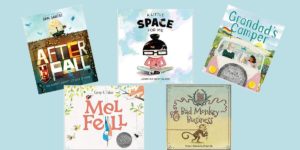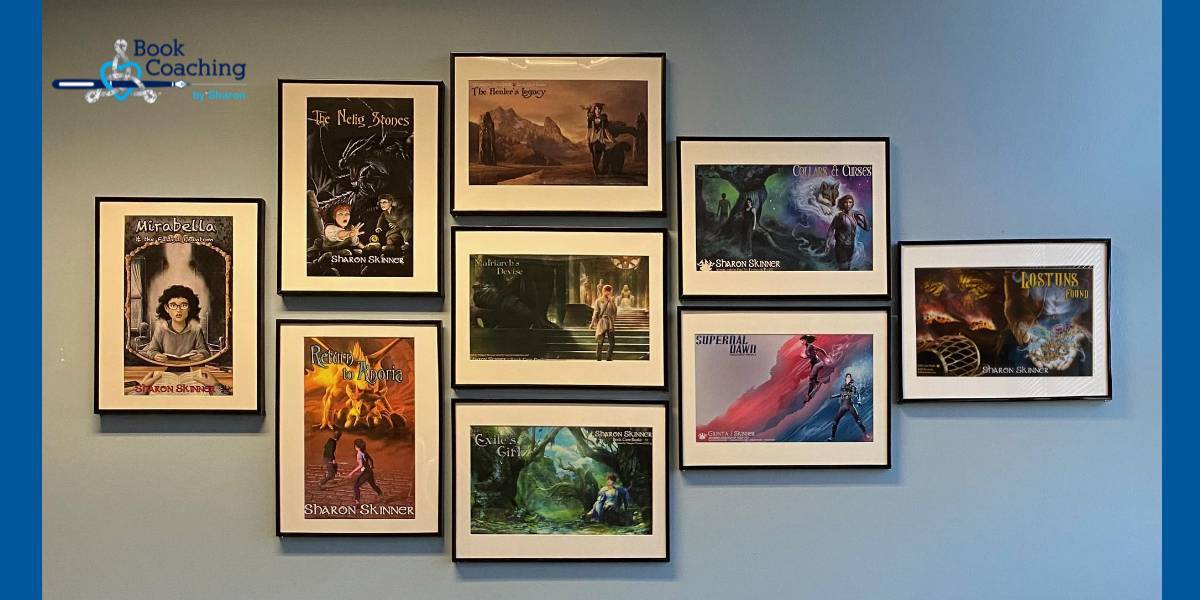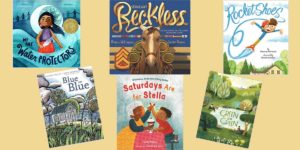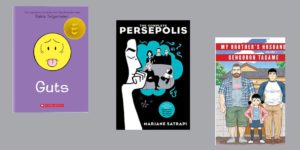Visual Artists and the Language of Illustration
In addition to my love of words, I have a deep love of the language of illustration.
“Don’t judge a book by its cover.” All my life I have had that old adage stuck in my head. And it’s truly great advice to live by when it comes to life and other people. Taking the time to see beneath the surface of things is incredibly important.
But when it comes to books, we all judge them by their covers. From the cover image that draws us in, to the jacket copy, and the blurbs on the back. Book covers are designed to give the reader a quick impression of why this is a book they should pick up and read.
But readers rarely get to the copy and the blurbs, if the cover image doesn’t do its job. While writing is the hook, the cover is the bait. Like the red flowers designed to lure in nectar eaters, the cover image must engage the reader and pique their curiosity about what lies inside.
I am in awe of visual artists. The skills they bring to bear to create images that not only capture the eye, but also the heart and the imagination.
The Language of Illustration in a Picture Book: Worth More Than a Thousand Words
Despite what many people think, picture books are notoriously difficult to write. While some of this is because, as an art form, there is much more to a picture book than simply text with illustrations.
Picture books are more deeply layered and do a lot more heavy lifting than is visible when reading them at the surface level. Additionally, the format relies on and is inclusive of the page turn in a way that novels need not be.
As if that isn’t enough, unless you are both author and illustrator, picture books are collaborative efforts with someone we writers have typically never met.
Which means that when drafting the text, the writer must leave room for the illustrator, even though we do not get to choose, and often do not even know, who the illustrator will be. This requires a great deal of understanding of the form, a high level of restraint in the writing, the ability to ensure that the words are tight and the narrative concise. This takes a high degree of trust and respect for the illustrator and what they bring to the table.
Saturdays Are for Stella by Candy Wellins, illustrated by Charlie Eve Ryan deals with the difficult subject of loss and grieving, yet is filled with undeniable love and bittersweet joy. Ryan’s illustrations manage to convey all of that emotion, mood and tone, in a way that shifts with the story.
Dianne White’s books are excellent examples of beautifully written and illustrated books that illuminate concepts while also telling stories. Particularly her books Blue on Blue, illustrated by Beth Krommes, and Green on Green, illustrated by Felicita Sala.
We Are Water Protectors by Carole Lindstrom (Anishinabe/Metis, tribally enrolled with the Turtle Mountain Band of Ojibwe) and Michaela Goade (an enrolled member of the Tlingit & Haida Indian Tribes of Alaska) is a timely and important book, written and illustrated by indigenous creators. Goade’s glorious artwork reflects the culture as well as invoking the flowy feel of water.
My Picture Book, Rocket Shoes, illustrated by artist/animator/illustrator, Ward Jenkins. Ward’s joyful illustrations convey movement and energy and flight in a way that is nothing short of spectacular and makes Jose’s story come alive. And his touches of humor and whimsy are ever-present. (He even put himself and his entire family in the book!) The publisher could not have chosen a better illustrator for my debut picture book.
Sergeant Reckless by Patricia McCormick, illustrated by Iacopo Bruno, is a great example of a nonfiction picture book that couples nonfiction with heart and whimsey. Weaving together McCormack’s narrative facts with Bruno’s accurate, yet, playful images, both the author and illustrator stay true to the story and provide a heart filled story of human and animal bravery.
There are a lot of examples of wonderful picture books created by author/illustrators. Some of my favorites include After the Fall by Dan Santat, Mel Fell by Corey R. Tabor, Grandad’s Camper by Harry Woodgate, Bad Monkey Business by Michael Hale, and A Little Space for Me by Jennifer Gray Olson. Get your hands on some of these and I think you’ll see why.
 The picture books listed here are just a few exceptional examples of the old adage about the end product being more than the sum of its parts.
The picture books listed here are just a few exceptional examples of the old adage about the end product being more than the sum of its parts.
The Language of Illustration in Cover Art
Visual artists who can take a book and encapsulate the key components into a single cover image are speaking volumes (pun intended) in the shorthand of a single image.
The expression of just the right feel, mood, tone to convey the journey that awaits the reader inside is just so incredibly impressive. Especially when, as is often the case, they have just a synopsis and perhaps a character description/sketch or two to go on.
When it comes to cover art, I would be remiss not to call out some of the incredible artists who have created covers for some of my books.
Thitipon Decruen whose incredible art graces all three covers of my Healer’s Legacy trilogy, and managed to convey the full story arc when placed together.
Keith DeCesare whose cover art exhibits his amazing ability to capture the mood and sensibility of action scenes, the atmospheric feel of the paranormal, and bring an emotional element to steampunk clockworks.
Kyna Tek whose illustrations are powerful and dynamic and an artist focused on delivering just the right image to convey the story.
The Language of Illustration in Graphic Novels (and Comics)
I have to be honest, as much as I love and respect the creative energy it takes to create a graphic novel, I find them challenging to read. For some reason, my brain wants to either read all the text on the spread first and then look at the pictures. Or look at the pictures before reading the text. For some reason, I can’t seem to focus on each panel of content. I have the same problem with comics.
That doesn’t mean I don’t read them. Just that for me it’s more of a challenge to parse them than it is to read a picture book or novel.
There are some amazing creators doing incredible work in graphic novels (and comics). Some wonderful examples that I have read include:
Raina Telgemeier: I was particularly smitten by her GN, Guts. It’s so fearless and does an excellent job of shining a light on anxiety. It’s written close to the bone, with deep emotion. And she can really illustrate, too! So much talent.
And speaking of bravery, Marjane Satrapi: Persepolis is eye opening and a beautiful handling of a heartbreaking story, that “of growing up as a girl in revolutionary Iran.” Her ordeal, and that of her family, friends, and home country, are handled in a forthright and educational manner and offered for us to digest and understand though her accessible words and pictures. What a gift!
Gengoroh Tagame: Quiet, yet powerful, My Brother’s Husband is filled with so much love and self-discovery. It broke my heart and filled me with hope and joy all at once.
The Language of Illustration is Additive
Illustrators have incredibly creative minds, often adding surprising elements and layer to the images that deepen the reader’s connection to the text.
I highly recommend the illustrators and author/illustrators listed above, not only as great reads, but as potential mentor texts for both writers and illustrators.
These are great examples of how the language of illustration speaks volumes (pun intended), even when we may not realize it.
Check Back Next Month for Love of Language, Part 3: The Book Coach/Editor as Translator
For more information on Book Coaching, check put my FAQ page.
If you’re interested in what I write, check out my Author site.
And if you write, or want to write children’s books, give my Coaching KidLit podcast a listen.



